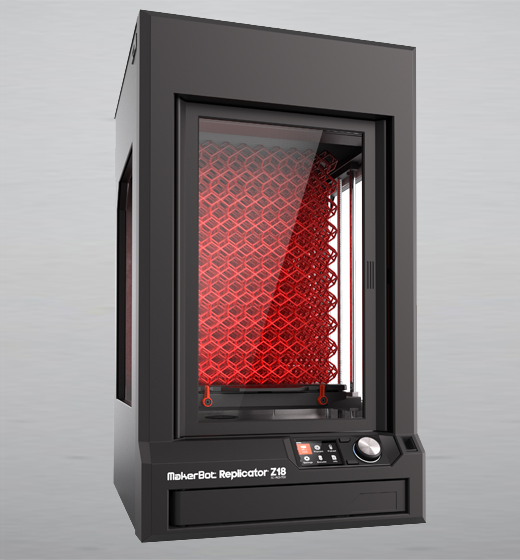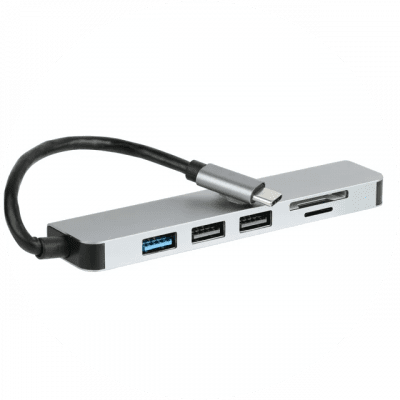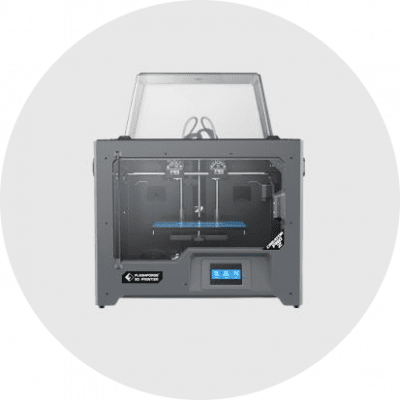![]() 3D printing is a quickly emerging technology in the manufacturing industry. With 3D printing, manufacturers are able to print parts at a fraction of the cost of traditional methods. 3D printing is now becoming more affordable for consumers and small businesses. The process begins with making a 3D model through a modeling software or scanning an object. Then in a process known as fused deposition modeling the object is printed using an extruder and a continuous filament of a thermoplastic material. The plastic is added layer by layer allowing for the production of very complex shapes or geometries.
3D printing is a quickly emerging technology in the manufacturing industry. With 3D printing, manufacturers are able to print parts at a fraction of the cost of traditional methods. 3D printing is now becoming more affordable for consumers and small businesses. The process begins with making a 3D model through a modeling software or scanning an object. Then in a process known as fused deposition modeling the object is printed using an extruder and a continuous filament of a thermoplastic material. The plastic is added layer by layer allowing for the production of very complex shapes or geometries.
Tech Kits
Tech Kits are part of the walk-in service provided by Innovate Labs. There are three levels of difficulty meant for different users and their experience with the different technologies. Many of the Tech Kits build off each other as you progress.
Beginner
Introducing 3D Printing with a 3D Printing Pen
Length: 30-60 Minutes
Description: 3D printing is an additive manufacturing process that involves the layering of heated plastic to form solid printed parts. A 3D printing pen extrudes heated plastic filament from the pen’s nozzle to make possible the drawing of raised graphics on any flat surface. The pen’s ability to draw in mid-air allows the user to instantly form tangible 3D structures. They are especially useful for 3D printing repairs, designs, and prototypes.
Intermediate
3D Printing with Prusa i3
Length: 30-60 Minutes
Description: “Slicer” refers to the division of the model into individual material layers or 'slices'. Slicer software allows the user complete control over every aspect of a 3D print. This includes, but is not limited to, the material, orientation, layer height, supports, and infill of the model. The 3D printer receives this information in the form of a gcode. The gcode tells the 3D printer everything necessary to print an object with the user selected settings to minimize the chance of a print failure. This tech kit teaches users the steps required to successfully 3D print on a Prusa using slicer software.
Advanced
3D Printing with FlashForge Creator Pro 2
Length: 30-60 Minutes
Description: Fused deposition modeling is the process by which the FlashForge makes solid, three-dimensional objects out of layered melted filament. To do this, 3D design files are converted into instructions for the FlashForge, and then transferred to the 3D printer via USB drive. The innovative process allows models of a variety of shapes and sizes to be produced quickly and inexpensively. This tech kit teaches users the basic steps required to 3D print an .STL file using a FlashForge Creator Pro 2, as well as utilizing the dual extrusion functionality.
Projects
Resources
![]()
3Doodler Create+ 3D Printing Pens
Quantity: 8
Description: A 3D printing pen extrudes heated plastic filament from the pen’s nozzle to make possible the drawing of raised graphics on any flat surface.

Makerbot: Replicator Z18
Quantity: 1
Description: This 3D printer is versatile solution for users from beginners to professionals.
![]()
Makerbot Desktop
Type: Modeling Software
Description: Makerbot Desktop is a free software that allows users to smoothly upload and prepare files for 3D prints.
![]()
Prusa i3 MK3+
Quantity: 1
Description: The Prusa i3 MK3+ automatic 3D printer is open source in terms of both hardware and software.
![]()
Prusa Slicer
Type: Software
Description: Slicer software allows the user complete control over every aspect of a 3D print. This includes, but is not limited to, the material, orientation, layer height, supports, and infill of the model.

SD Card Reader
Type: Device
Description: A small device that is used to access, read, copy and backup data from a wide variety of memory cards.

FlashForge Creater Pro 2
Quantity: 1
Description: The Flashforge Creator Pro 2 provides beginners with higher quality and easier operation.